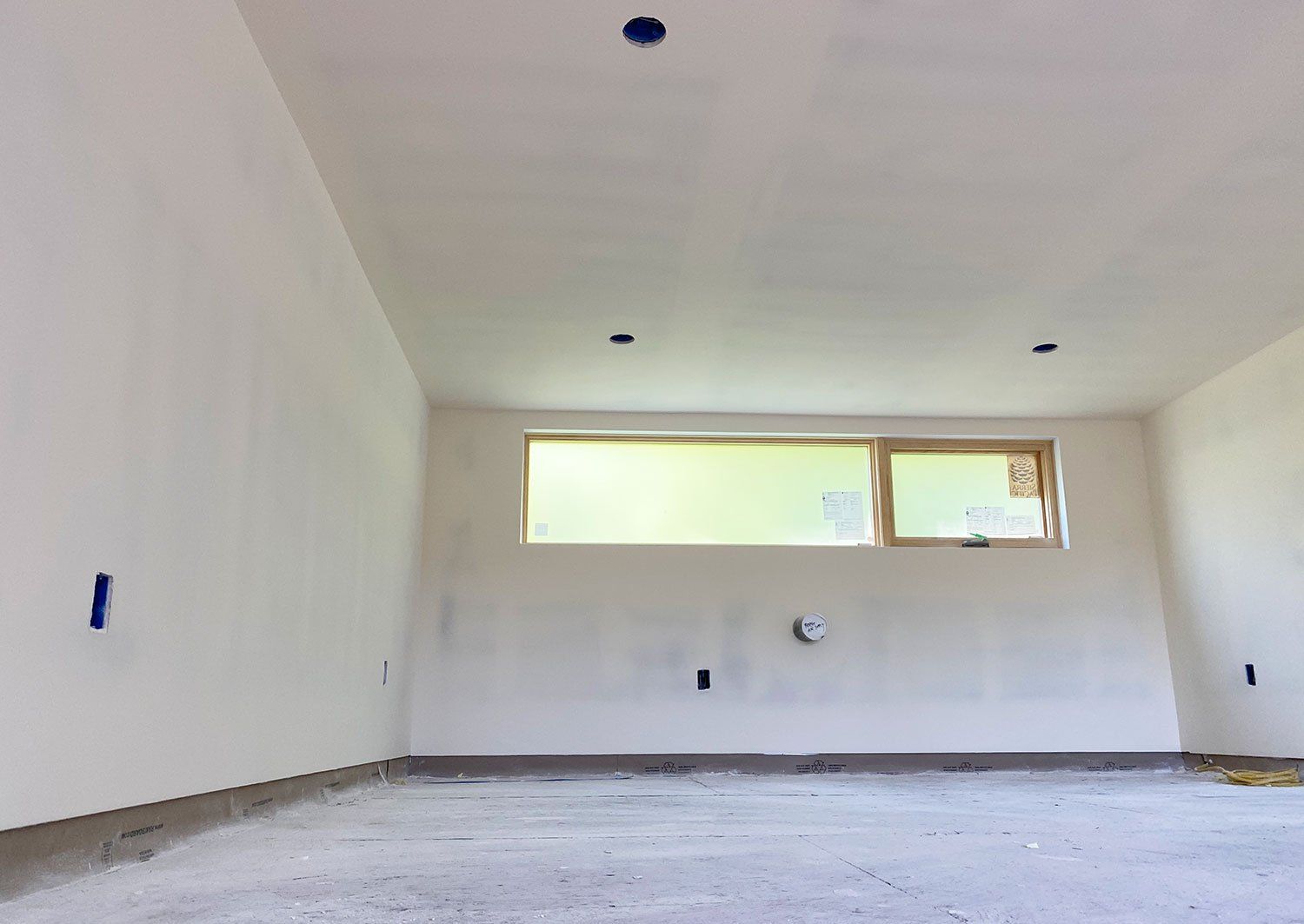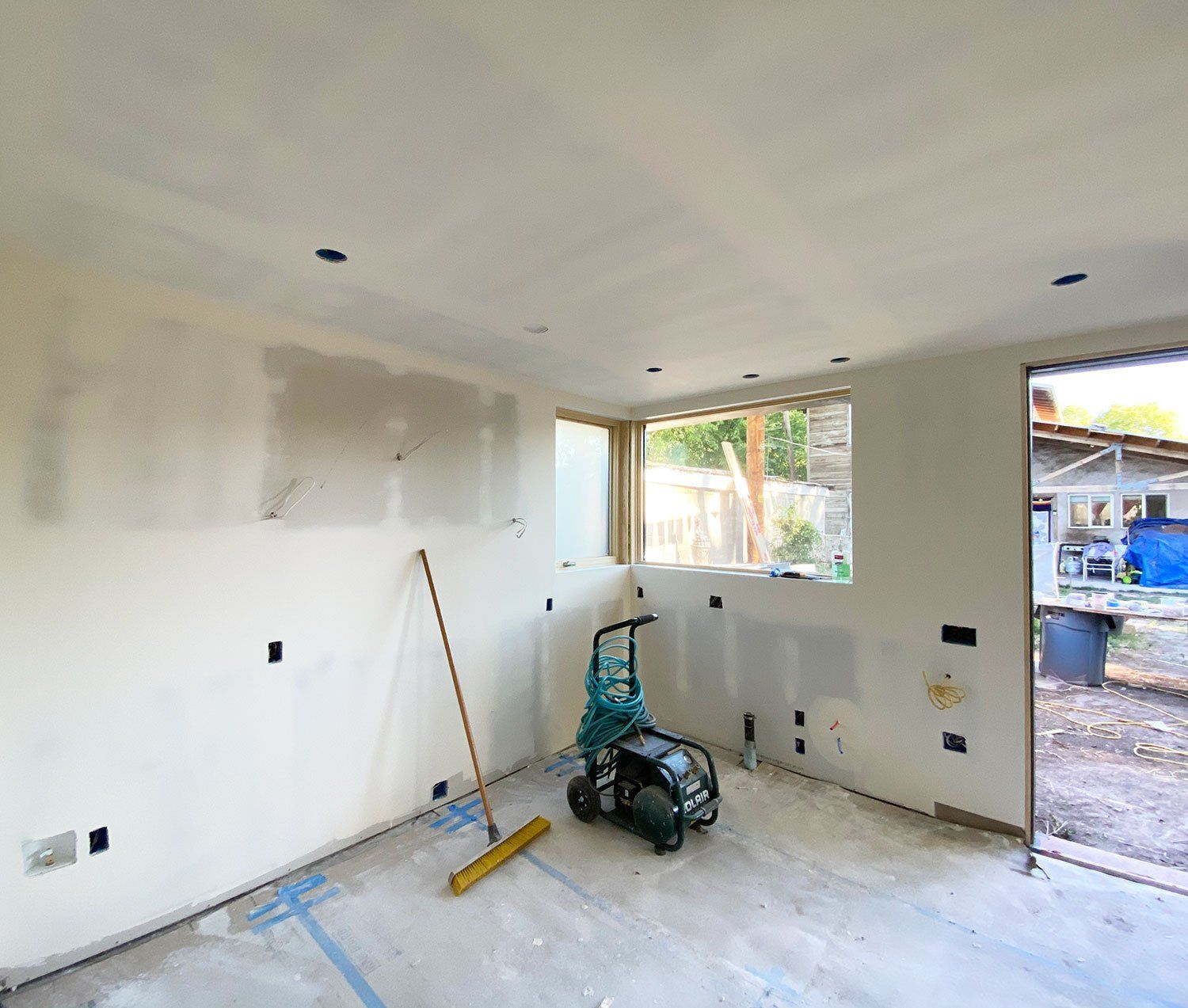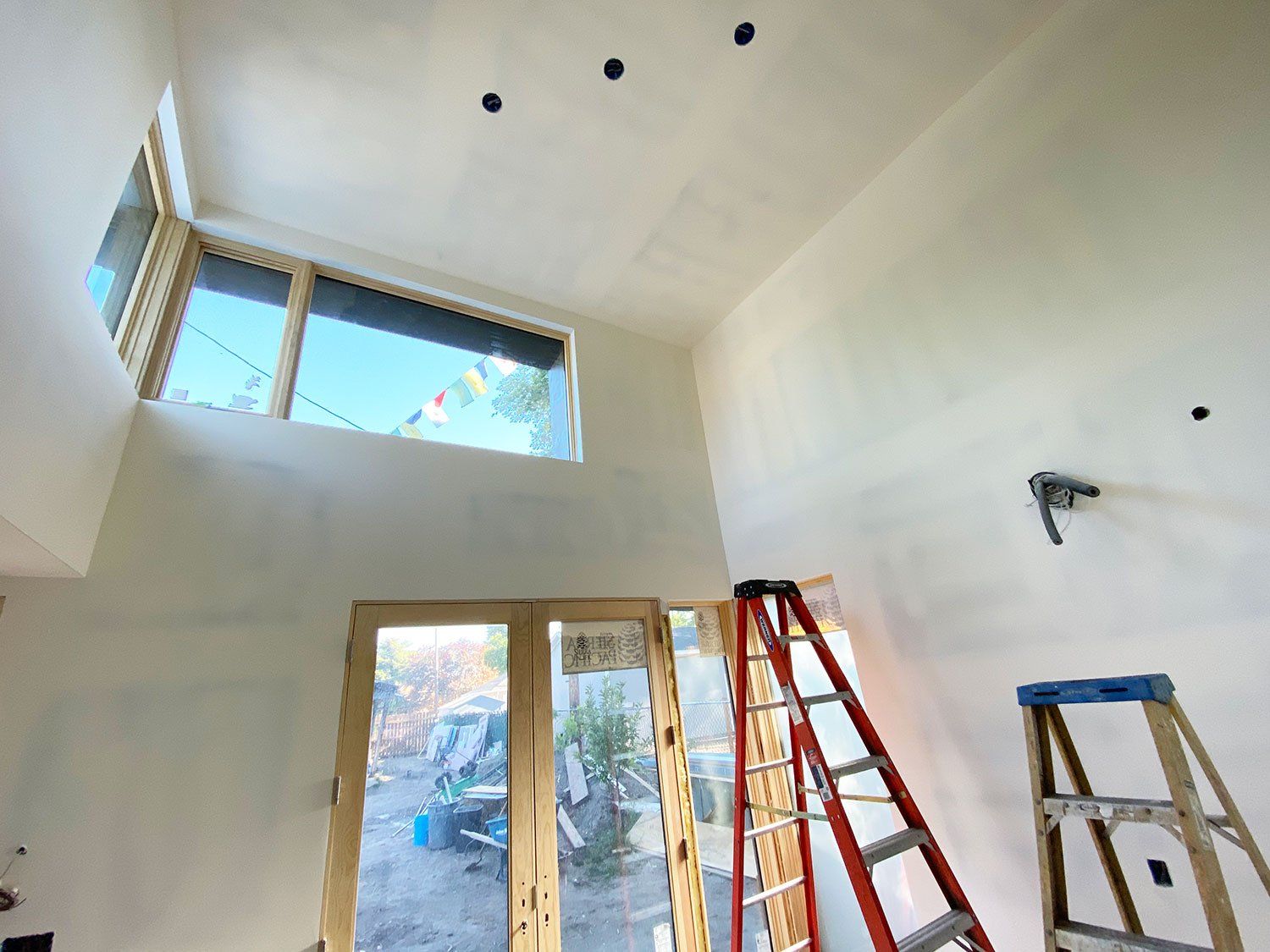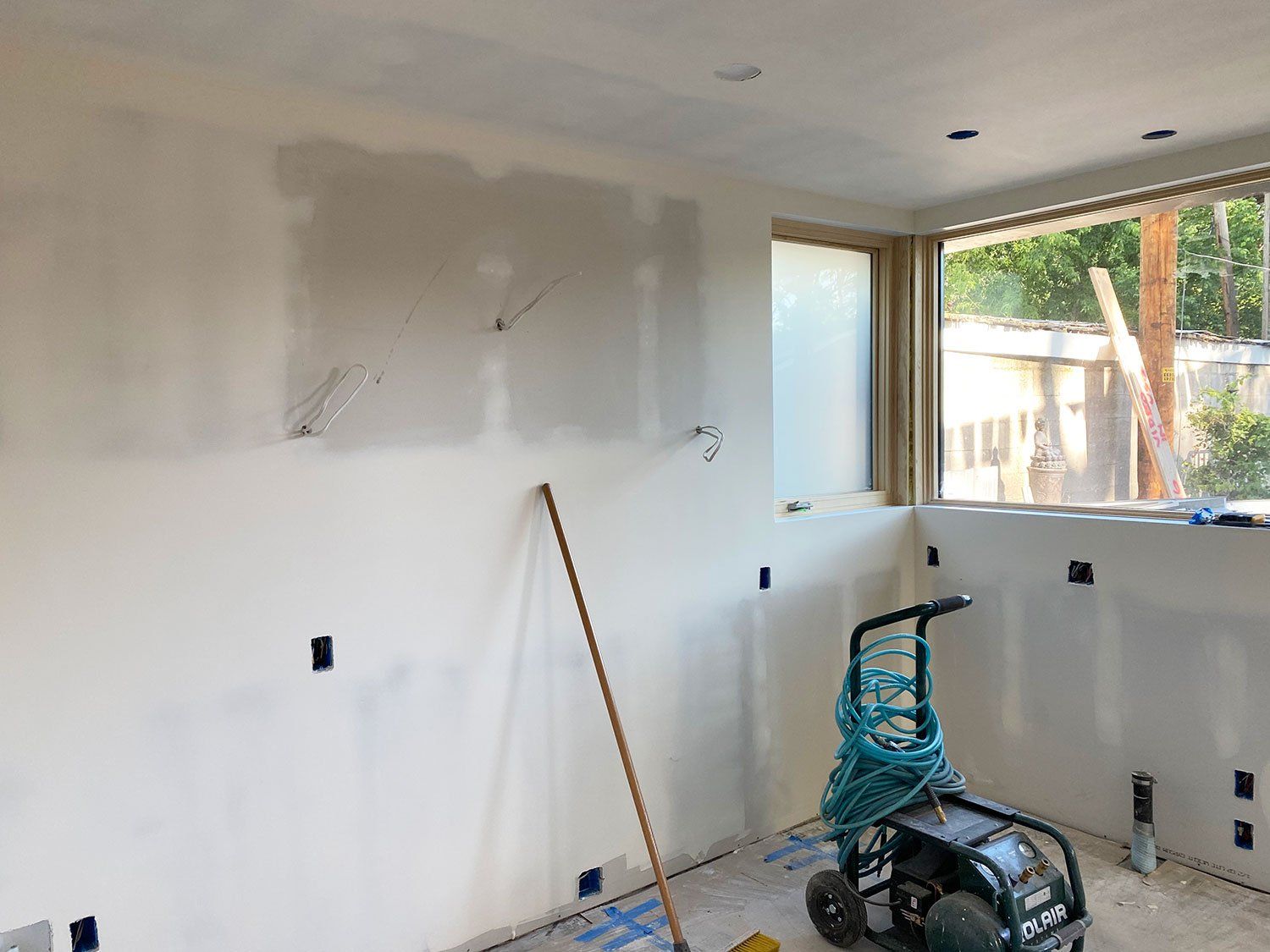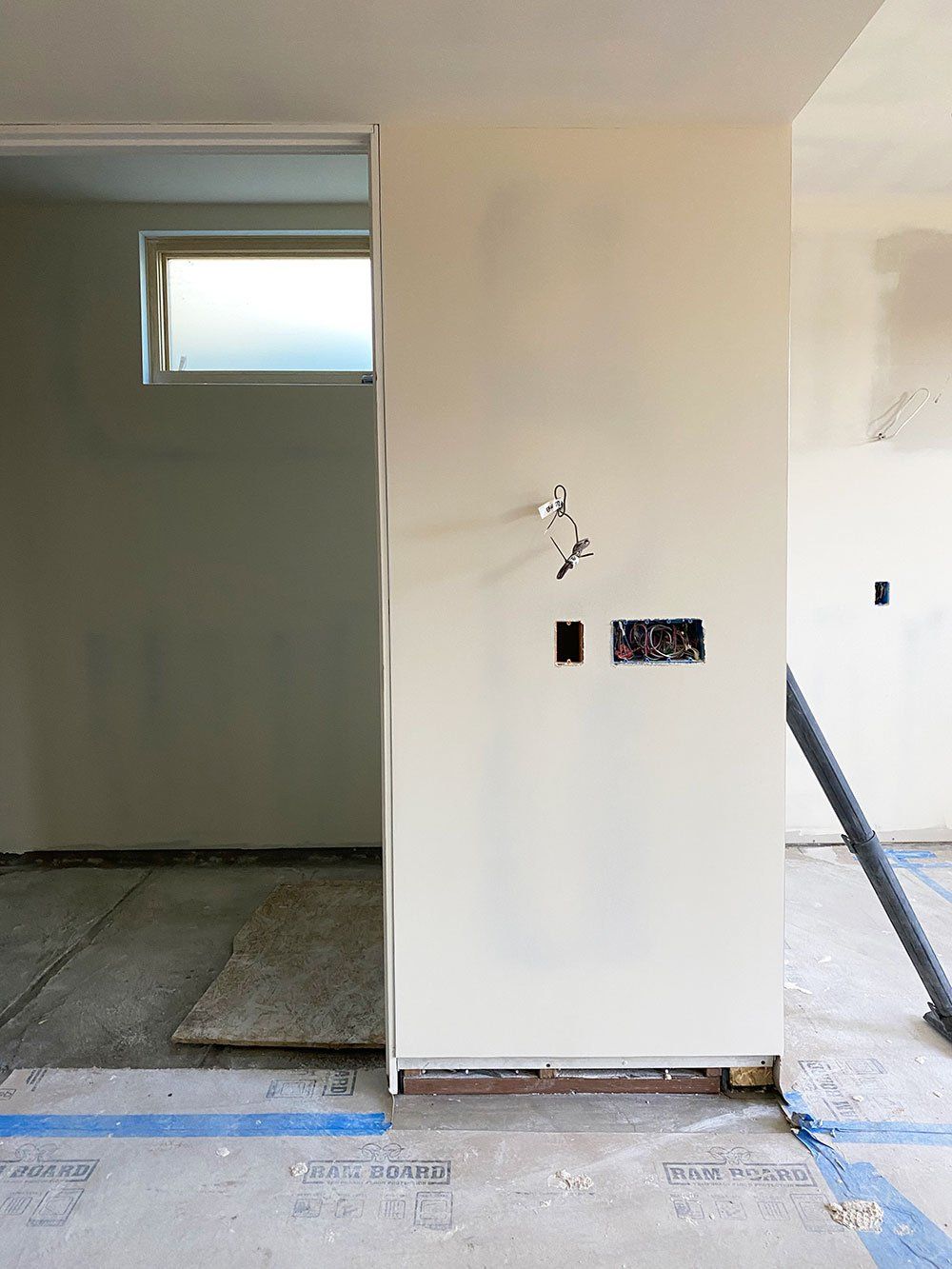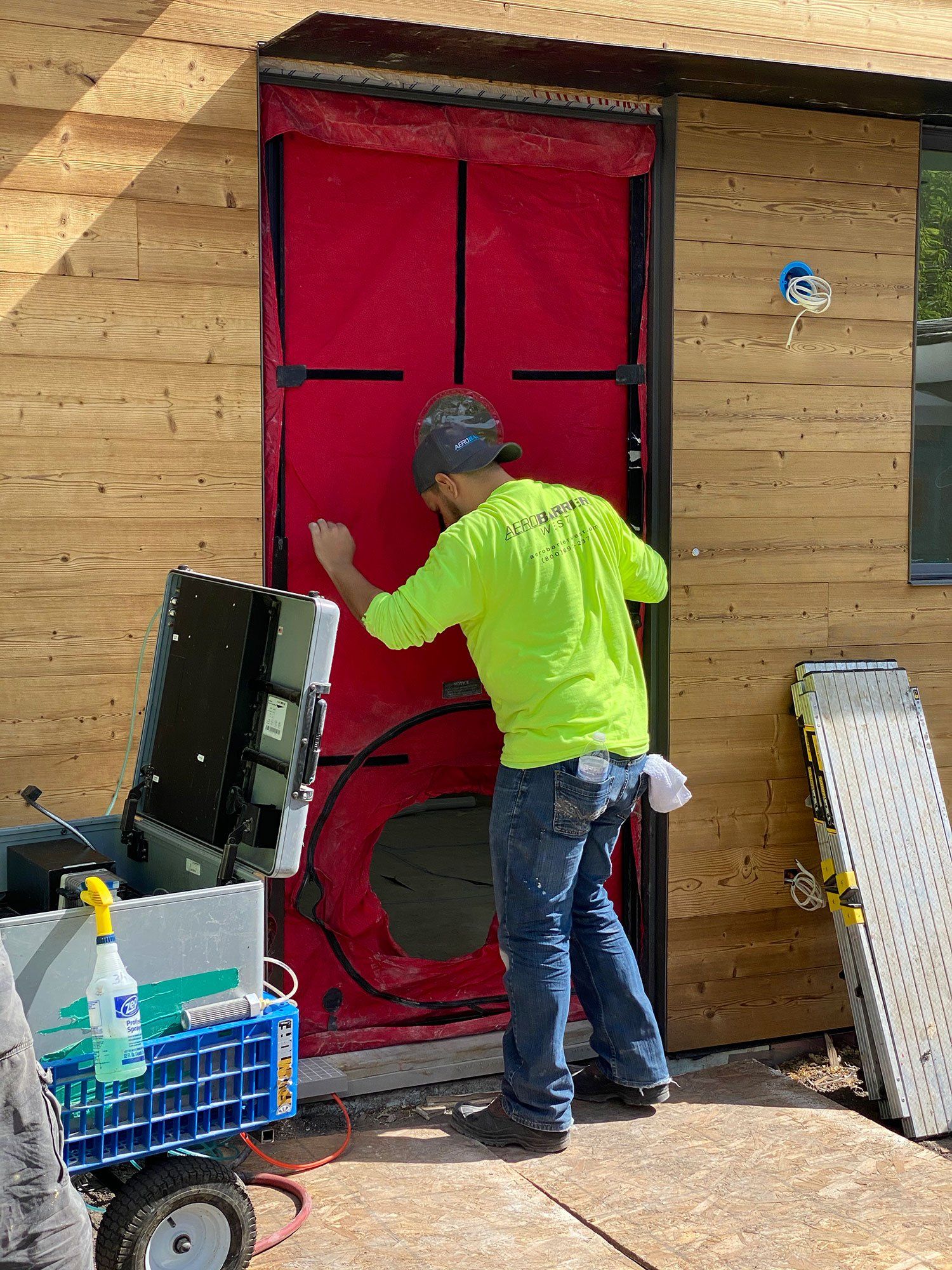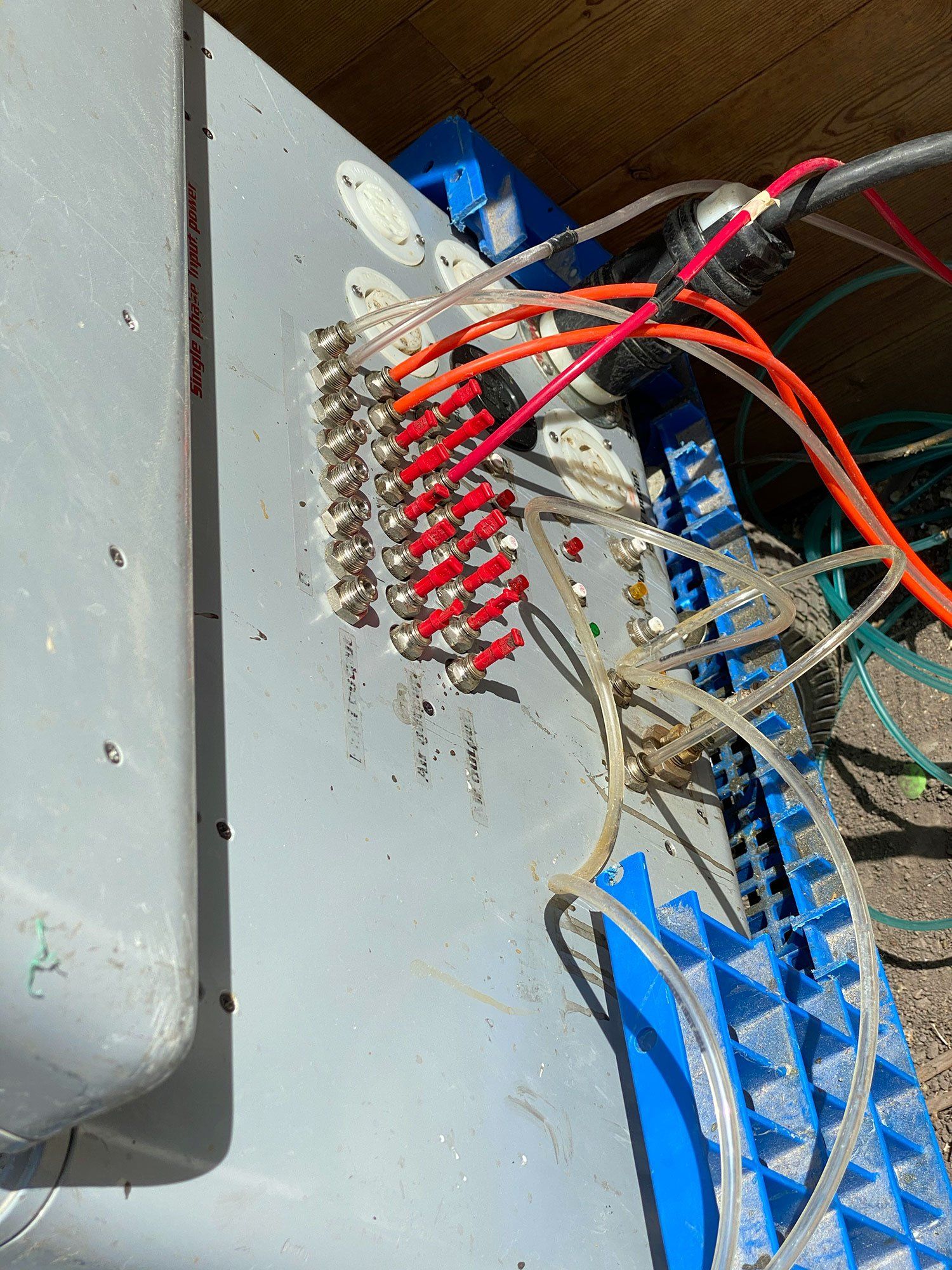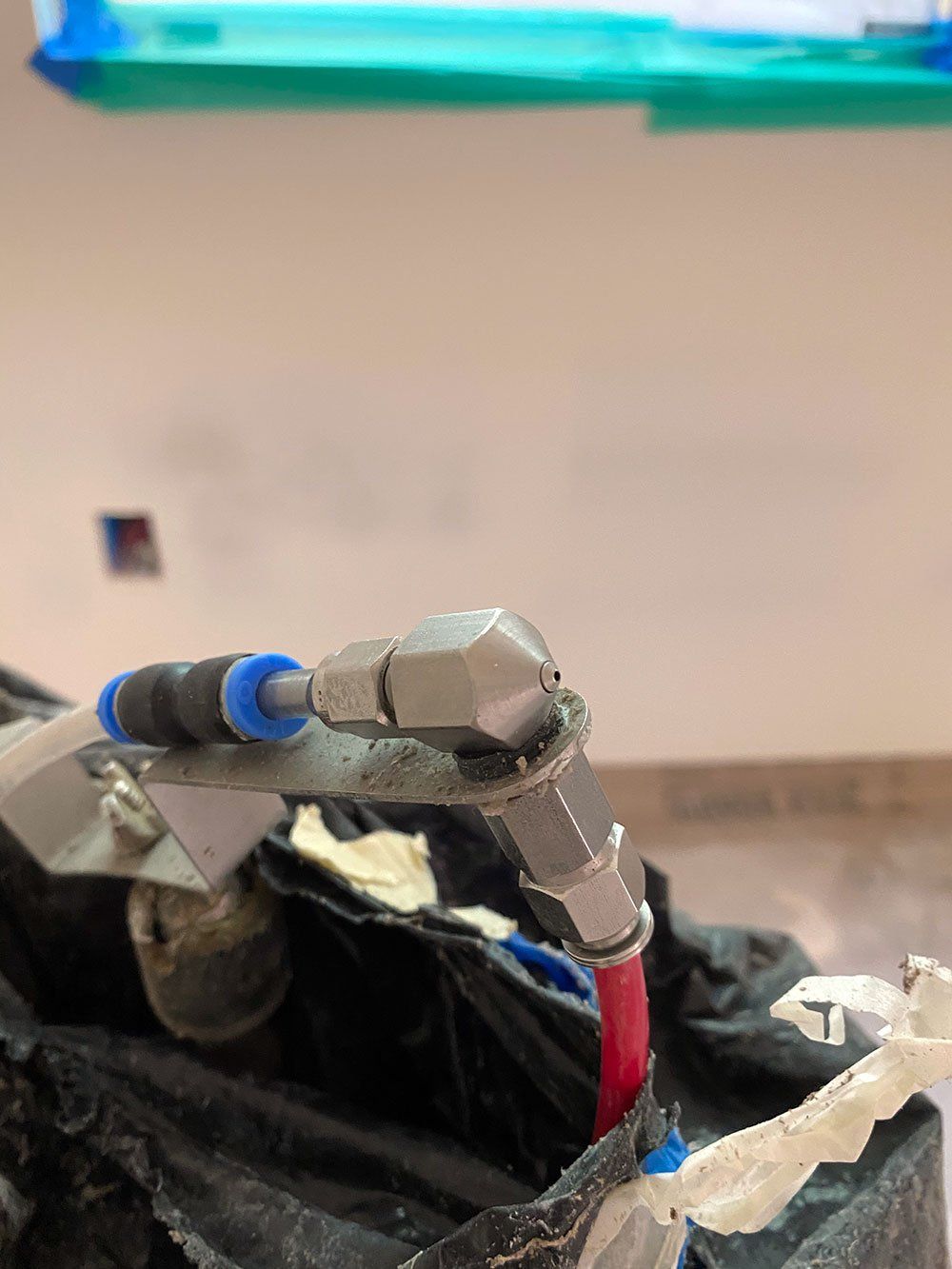Build June 2020: Interior and Performance
After the drywall was installed, sanded and mudded, the Kunga ADU was tested for its air infiltration performance, and the Aero Barrier was installed, elevating the air tightness to Passive House standards.
Early June - Mudding and Sanding
The devil is in the detail - the corner windows, of which we have three, became a challenging task to integrate the wooden frames and the interior corner itself well into the drywall, considering the thickness of the material and its transitions. We try to avoid any trimming to make the building look clean and contemporary, with the drywall corners carefully worked into the window frames.
The shower walls received water-resistant boards, which are also required by code. The entire floor and the dark wall areas will be tiled with 12x24" tiles that were donated by Ambiente European Tile Design in Seattle.
First Performance Testing - Pre Aero Barrier
The Kunga student and faculty team, over the progress of construction to this point, put a lot of effort into designing and building this small unit to the highest performance level that budget would allow. This included a comprehensive site analysis; a careful building design for its specific location; additional insulation in walls and roof; an entirely insulated concrete slab; additional air tightness measures between the concrete slab and the sill plates of the walls; closed-cell spray-on foam in all critical areas, and taping of all seams on the outside and where accessible. As a result, the first Bower-Door test performed gave us a value of 1.75 ACH50, which is well above performance requirements for a code standard residential building. Anyhow, it is still above the project's target of originally 1.0 ACH50, but with the decision to install the Aero Barrier system, we were now aiming at Passive House performance on the air infiltration level.
The thermal camera images to the left show that there is still heat loss through the concrete slab and below the walls. This is due to the thinner insulation package (4" XPS) in this area, which was prescribed by the site and code constraints. Any thicker insulation layer would have taken away from the already limited indoor net area, which is why the result is the balanced compromise between the two requirements and goals. As for standard construction, this linear thermal bridge's energy loss would have been considerably larger, since in Utah most concrete slabs on grade are not isolated to the outside at all.
This images shows very little energy loss at the wall-to-roof connection, which was already well taken care of by using closed-cell spray-on foam in these areas and taping the corners airtight on the outside. This performance result is absolutely acceptable and shows that the students did a great job in achieving a high-performance building.
Finally, a very typical weak point in wooden stick-frame construction are electrical outlets and light cans. These usually compromise not only insulation thickness, but more importantly create drafty points in the building, which is why we decided to install the Aero Barrier system to ensure that those leaks are eliminated.
Installing the Aero Barrier
To get to our desired air infiltration goal, we hired Aero Barrier West to install this new high-performance building system. During the process, the building is taped shut and set under 100 pascals positive pressure, when a liquid gasket is sprayed into the building under very high pressure, creating tiny aerosol particles that start to clog all areas of high wind velocity - these are all the gaps and cracks that are remaining in a building. At the beginning of the process, we started at a 2.5 ACH50, which was different from the previous test because we forgot to close shut one of the upper windows. After this issue was fixed, the team was down to 1.7 ACH50, and the computer could tell us that we had a sum of leaks of 22 square inches.
At the end of the 90 minute envelope sealing process, we were down to a sum of 8.8 square inches in the entire building, giving us a Passive-House air tightness of 0.6 ACH50 (for comparison, standard residential construction performs anywhere between 5-7 ACH50 or even worse). Theoretically we could have continued to seal for another 90 minutes, but this target constituted the perfect balance of air infiltration in combination with the other passive measures that we applied for this building. The effort to get here will result in a draft-free, extremely comfortable indoor environment, where the right amount of filtered, fresh air is controlled by the ERV system.
Finally, it is always most enjoyable to do finishing work - the installation of the stainless steel exterior ERV grilles brought the appearance from this image of a rough foam pipe penetrating the north wall ...
... to this image, which shows that it always pays back to invest a tiny little bit more for quality. The Zehnder grille is made of solid, thick stainless steel, which will last for the building's lifetime. Compare this to the standard, thin-walled galvanized metal grills that are used in standard construction. Since the Kunga ADU is an educational project, it is extremely important to teach students those strategies - in the end, little items like this considerably change the perceived quality of a building.

